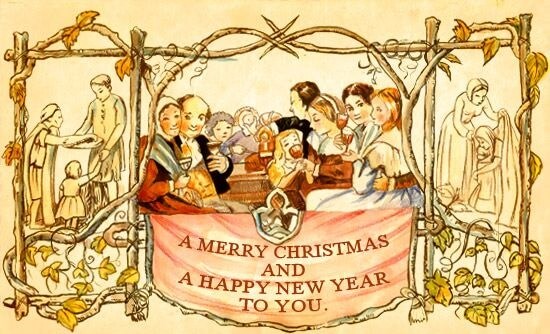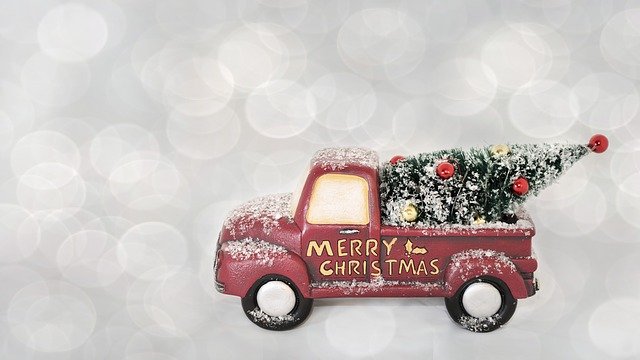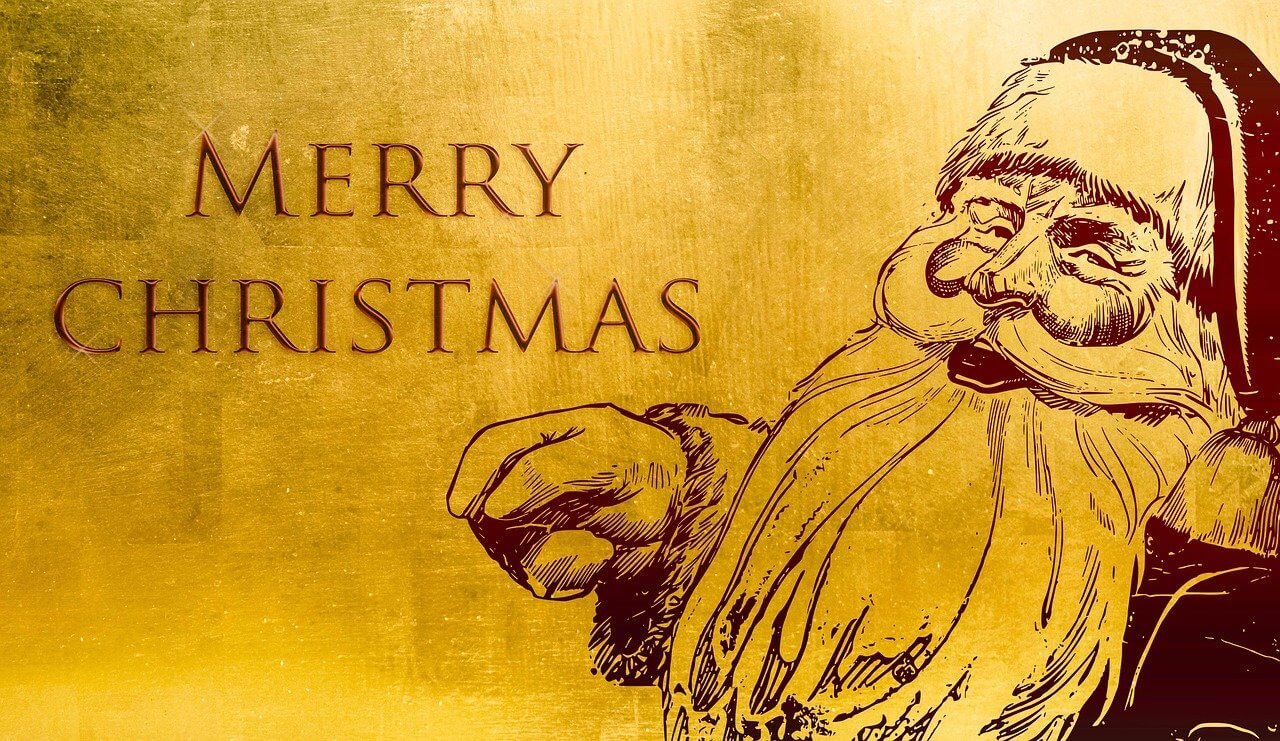Explore the origins of the first Christmas card in 1843 and how it paved the way for a cherished holiday tradition.
The first Christmas card is credited to Sir Henry Cole, a British civil servant and inventor. He commissioned the design of the first Christmas card in 1843. The card was illustrated by John Callcott Horsley, a well-known artist at the time, and featured a festive scene with people enjoying a Christmas dinner and a message that read “A Merry Christmas and a Happy New Year to You.”
The card was printed in London, and it marked the beginning of the tradition of sending Christmas cards during the holiday season. It’s important to note that while this was one of the earliest Christmas cards, there were similar traditions of exchanging holiday greetings in various forms prior to this, but Cole’s card helped popularize the practice of sending Christmas cards in a more formal and commercialized way.

First Christmas Card
What are some significant milestones in the history of Christmas cards?
The history of Christmas cards has seen several significant milestones over the years. Here are some key points in the development of Christmas cards:
- 1843 – The First Christmas Card: As previously mentioned, Sir Henry Cole commissioned the first Christmas card in 1843, designed by John Callcott Horsley.
- 1850s – Mass Production Begins: As printing technology improved, Christmas cards began to be produced on a larger scale, making them more affordable and accessible to the general public.
- 1862 – Louis Prang Introduces Cards to the United States: German immigrant Louis Prang is often credited with popularizing Christmas cards in the United States. He began mass-producing them in the early 1860s.
- 1870s – Popularity Spreads: Christmas cards became widely popular in the late 19th century, with various designs and themes reflecting the Victorian era’s sentimentality and interest in holiday traditions.
- 1880s – Introduction of Die-Cut Cards: Die-cutting technology allowed for more intricate and artistic card designs, leading to the creation of more elaborate cards.
- 20th Century – Artistic Styles Evolve: Throughout the 20th century, Christmas card designs reflected the changing artistic styles of the times, including Art Nouveau, Art Deco, and modernist influences.
- 1950s – Commercialization and Personalization: The mid-20th century saw a significant increase in commercial Christmas card production, with many companies offering personalized printing services.
- 1960s – Photo Cards and Customization: The introduction of photo cards allowed people to include their own family photos in their Christmas cards, adding a personal touch.
- Digital Age – E-Cards and Online Greetings: With the advent of the internet, e-cards and online greetings became popular alternatives to traditional printed cards. People could now send electronic greetings via email and social media.
- 21st Century – Sustainability and Personalization: In recent years, there has been a growing trend toward eco-friendly Christmas cards made from recycled materials. Additionally, personalized and handmade cards have gained popularity, reflecting a desire for more meaningful connections during the holiday season.
- Charitable Christmas Cards: Many organizations and charities produce Christmas cards as a way to raise funds for various causes, contributing to the tradition of sending cards for a charitable purpose.
These milestones illustrate how Christmas cards have evolved from their early beginnings as a single commissioned design to a widespread and diverse tradition that continues to adapt to changing times and technologies.

In which country did Christmas cards first become popular?
Christmas cards first became popular in the United Kingdom. The tradition of sending Christmas cards was popularized by Sir Henry Cole, a British civil servant, in the 1840s. The first Christmas card was designed in England in 1843, and it marked the beginning of the practice of exchanging festive greetings in card form during the holiday season.
The idea of sending Christmas cards quickly spread to other English-speaking countries and beyond. It became a widespread and enduring tradition, with people in various parts of the world adopting the custom of sending Christmas cards to convey their holiday wishes and greetings.

How did the evolution of Christmas cards take place, and what kind of images did they initially feature?
The evolution of Christmas cards took place over the course of several decades, and the early cards featured a variety of images and themes. Here’s a brief overview of how Christmas cards evolved and what kind of images they initially featured:
- Early 19th Century: Before the introduction of Christmas cards, people exchanged handwritten letters and notes to convey their holiday wishes. These letters often included festive illustrations or decorations, but they were not yet formalized as Christmas cards.
- 1840s-1850s: The first Christmas cards began to appear in the 1840s and 1850s. Sir Henry Cole, a British civil servant, is credited with popularizing the practice of sending Christmas cards in the early 1840s. The early cards were relatively simple and featured traditional holiday imagery such as:
- Nativity scenes with depictions of the Holy Family.
- Angels and shepherds.
- Winter landscapes with snow-covered scenes.
- Festive decorations like holly, mistletoe, and bells.
- Christian religious symbols like the Star of Bethlehem.
- 1860s-1870s: As printing technology improved, Christmas cards became more affordable and accessible to the general public. During this period, the imagery on Christmas cards continued to include religious and traditional themes, but it also expanded to include:
- Victorian-era sentimentality, with depictions of happy families and children.
- Scenes of holiday feasting and celebrations.
- Nature-inspired designs featuring birds, animals, and winter foliage.
- Late 19th Century: The late 19th century saw the introduction of more elaborate and decorative Christmas cards. Die-cutting technology allowed for intricate designs, and cards often featured embossing, gilding, and lace-like patterns. Themes became more diverse, including scenes from Charles Dickens’ “A Christmas Carol” and other popular stories of the time.
- 20th Century: In the 20th century, Christmas card designs continued to evolve to reflect changing artistic styles and societal trends. Art Nouveau, Art Deco, and modernist influences appeared in card designs. Additionally, secular and non-religious themes became more common, with Santa Claus and other holiday symbols playing a prominent role.
- 21st Century: In recent years, Christmas card designs have become even more diverse, ranging from traditional and religious imagery to humorous and personalized cards featuring family photos and customized messages. There has also been a growing interest in eco-friendly and sustainable card options.
Throughout their history, Christmas cards have reflected the cultural and artistic trends of their respective times, making them not only a means of holiday communication but also a window into the changing aesthetics and values of the societies in which they were created.

What impact did Christmas cards have on society, and how are they used today?
Christmas cards have had a significant impact on society since their inception in the 19th century. Here are some key ways in which Christmas cards have influenced society and how they are used today:
- Promoting Holiday Spirit and Connection: Christmas cards have played a role in promoting the holiday spirit by allowing people to send warm wishes and greetings to friends, family members, and acquaintances, even if they couldn’t be together in person. They foster a sense of connection and goodwill during the holiday season.
- Commercialization of Christmas: The mass production and exchange of Christmas cards contributed to the commercialization of Christmas. Greeting card companies, artists, and printers saw a booming business in producing and selling Christmas cards, leading to the growth of the greeting card industry.
- Expression of Creativity and Artistic Trends: Christmas cards have been a canvas for artists and designers to express their creativity and reflect artistic trends of the time. They have showcased a wide range of artistic styles and techniques over the years.
- Documentation of History and Culture: Christmas cards provide a historical record of how holiday traditions, fashions, and societal values have evolved over time. They offer insights into the customs and trends of the eras in which they were created.
- Charitable Endeavors: Many organizations and charities produce Christmas cards as a fundraising tool. These cards often feature artwork or designs created by artists, and the proceeds from their sales go toward supporting various causes, making them a way to give back during the holiday season.
- Personalization and Individuality: Today, Christmas cards continue to be a means of personal expression. People often send cards that reflect their personal tastes, beliefs, and family photos. The customization of cards allows individuals to make a more personal connection with their recipients.
- Digital Evolution: In the digital age, the tradition of sending Christmas cards has expanded to include electronic or digital cards (e-cards) sent via email or shared on social media platforms. This allows for immediate and widespread sharing of holiday greetings.
- Environmental Considerations: There is a growing awareness of the environmental impact of paper cards, leading to an interest in eco-friendly options. Many people now seek out Christmas cards made from recycled materials or opt for digital alternatives to reduce paper waste.
- Business and Corporate Use: Businesses often send Christmas cards to clients, partners, and employees as a way to maintain and strengthen professional relationships. These cards may include a company’s branding and logo.
In summary, Christmas cards have played a multifaceted role in society, from fostering connections and spreading holiday cheer to reflecting cultural and artistic trends. While their traditional paper form remains popular, digital alternatives and eco-friendly options have also emerged, reflecting contemporary concerns and preferences. Regardless of the medium, the exchange of Christmas cards remains a cherished holiday tradition for many people around the world.